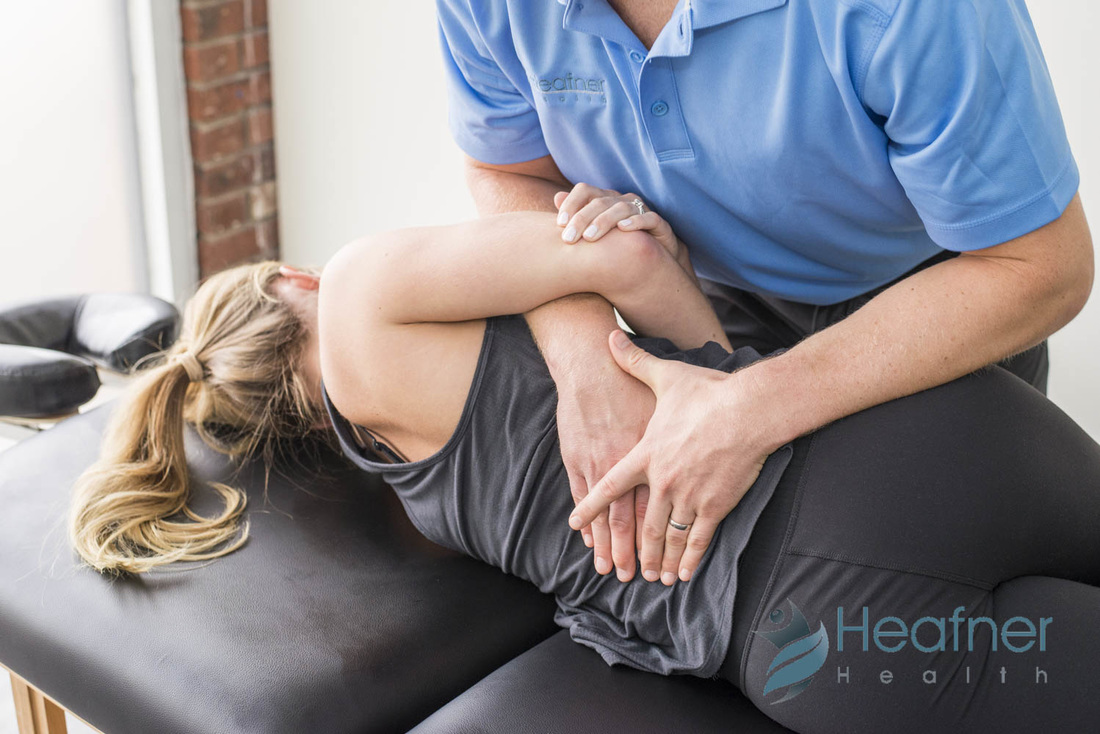|
Whenever a topic receives a large amount of attention, the good, bad, and ugly are all spewed into mainstream media. This often leaves the consumer lost and confused regarding the truth. Many misconceptions exist surrounding the causes of back pain and best treatment options. Misconception 1: The best treatment for low back pain is restWhen on bedrest, muscles atrophy at a rapid rate. Within 1 week of bedrest, the body loses 12% of it's muscle mass. At 3-5 weeks, the muscles atrophy over 50%. After a low back injury, it is necessary to get the spine moving to prevent muscle wasting, improve lymphatic drainage, and increase blood flow to the injured region. While rest is not the best solution, it should be known that if you are experiencing acute low back pain, excessive exercise can also prolong your recovery. My recommendation: graded, protective exercise. Perform gentle, non-threatening movements for the spine. Additionally, exercises like the recumbent bike or walking in a pool are excellent. Ultimately, let pain be your guide. Are your currently experiencing low back pain? Misconception 2: Back pain is pathologicalPathology is defined as the causes and effects of a disease. Back pain is not a pathology. It is merely a symptom. In fact in many instances the cause of low back pain is not the low back. Low back pain manifests because the areas surrounding the low back- primarily the hips and middle back- are stiff and tight. The low back is forced to take on extra stress thus becoming injured. Misconception 3: Back pain means the back is weakWith low back pain, there is a tendency to believe that the spine is weak, fragile, or frail. These thought viruses keep people from returning to normal activities because of the fear that the low back is not stable. In reality, the low back is often very strong. The spine is meant to absorb large compressive forces. It will not break simply because you are now experiencing pain. Think strong! Misconception 4: Back pain is a normal part of agingBack pain occurs because of a loss of stability or mobility somewhere in body. In general older people experience pain because they stop using certain muscle groups. For example, think about the last time your father (or grandfather) jumped? Or the last time he performed quick side-stepping movements as an exercise. Younger individuals naturally perform these movements when playing sports or running around with their friends. Older people simply avoid these activities and the result is pain. Misconception 5: Disc herniations are the cause of my painWhile traumatic disc herniations can be the source of pain, many times a disc herniation is not the cause of one's pain. A 2014 study, found that >50% of individuals from 30-39 years old without low back pain had degenerative changes and bulging discs. The participants in the study were completely asymptomatic young people, yet still demonstrated some spinal changes! Disc herniations should be thought of as ‘internal gray hairs.’ Just as our body ages on the outside, it also ages internally. The internal aging process is natural and not the source of our pain Considering disc surgery? Get a second opinion! A 2011 study was published evaluating the outcomes of individuals who had surgery vs. conservative therapy for disc herniations. While pain was reduced earlier in the surgical population, at 1-2 years of follow-up the outcomes were the same. Need corrective exercises to minimize your risk of low back pain?
3 Comments
Manuel Franco
8/29/2023 10:49:51 pm
I just want to say Thank You to everyone who supported me through the years. My name is Manuel Franco, New Berlin, Wisconsin. My story of how I won the Powerball lottery of $768.4M is a bit of a tale. I have been playing Powerball tickets for 6 years now since I turned 18. I bought my first ticket on my 18 birthday. I was feeling very lucky that day because I had contacted Dr. Odunga Michael to help me with the winning Powerball numbers. I really had that great great feeling that I looked at the camera wanting to wink at it. I only did a tiny part of it and trusted him. He gave me the numbers after I played a couple other tickets along with it for $10. I checked my ticket after the winnings came online and saw the numbers were correct including the Power play. I screamed for about 10 minutes because it felt like a dream. I had won $768.4M. You can check my winning testimony with the lottery officials just with my name search. Thank you Dr Odunga. Well, his email is [email protected] and you can also call or Whats-app him at +2348167159012 so you guys can contact him
Reply
Hailey Garcia
6/20/2024 11:09:55 pm
My name is Hailey Garcia and I am from New Jersey. My herpes virus turned to war after 2 years of living with it. I have tried different medical procedures to cure my herpes but to no avail. Most people think herpes is only a minor skin irritation of which herpes has long term effects on health and passes through the bloodstream and can be easily contracted through sexual intercourse. I knew I had herpes from the first day I started feeling itchy in my pubic area and the pain was very unbearable. I couldn't stand it anymore. After 2 years of trying other means to get rid of it, I had to contact Doctor Odunga to help me with a permanent cure. I saw his email and whats-app number from a testimony I read online from a lady who was also helped by him in curing infertility problems, I had faith and contacted him. He assured me of his work and I ordered his herbal medicine. Within 5 days, I didn't feel any pain anymore and within 2 weeks, my skin was all cleared and smooth. I am very grateful to you sir and I write this testimony as others have done to bring those having faith to you sir. If you have herpes or other similar disease and you want it cured, kindly contact Doctor Odunga, Whats-App (wa.me/+2348167159012) OR Email [email protected]
Reply
Leave a Reply. |
Heafner HealthPhysical Therapy Archives
April 2024
Categories |



 RSS Feed
RSS Feed
